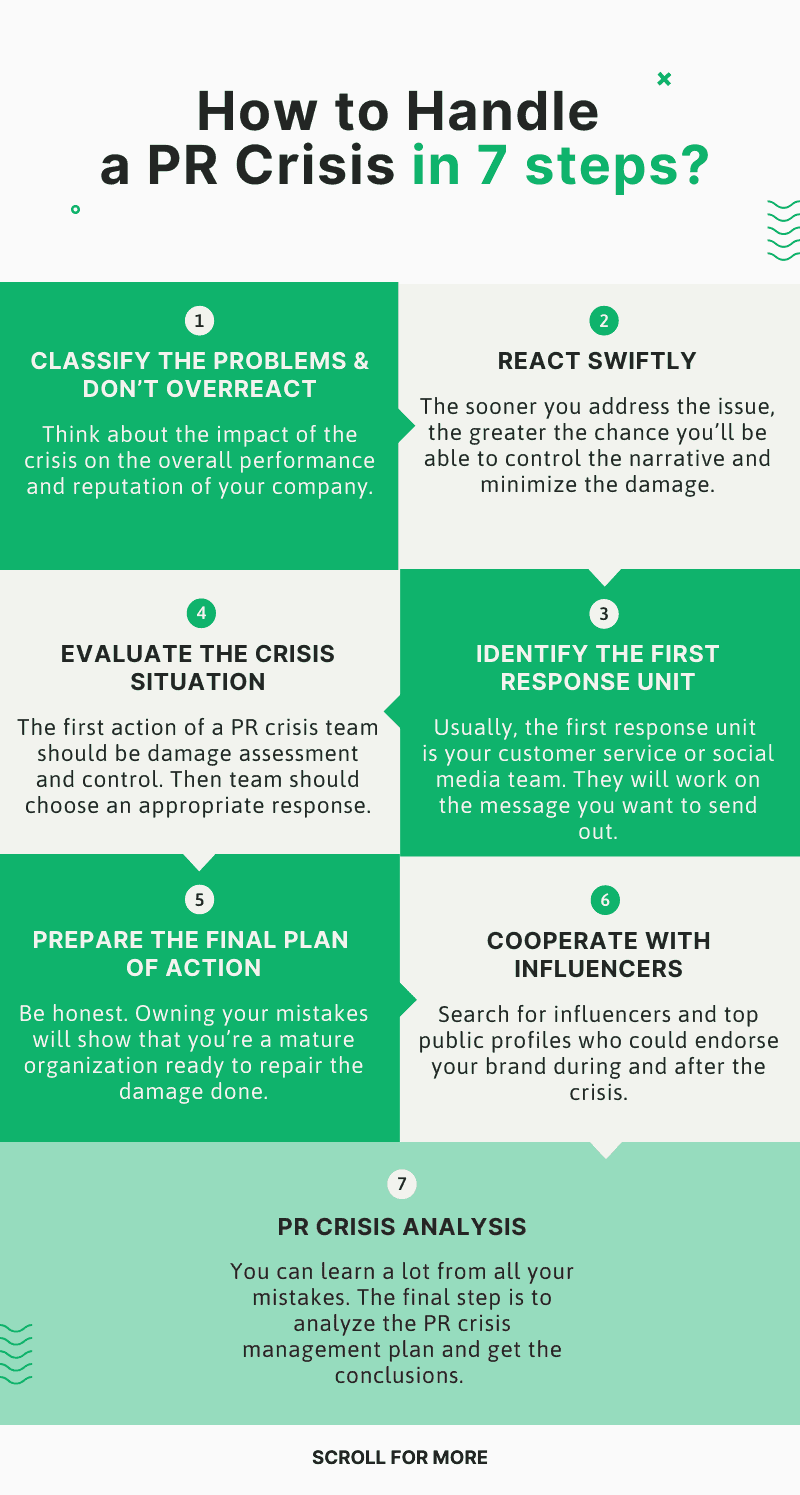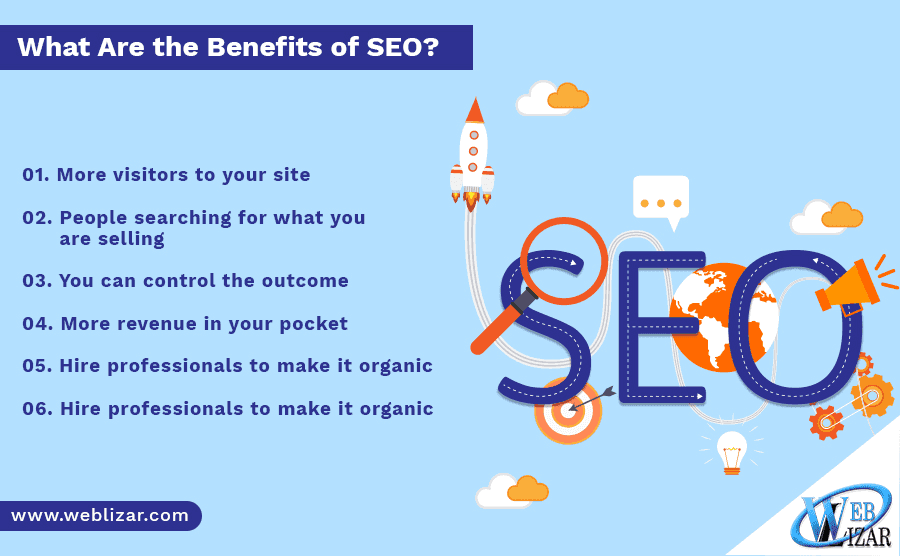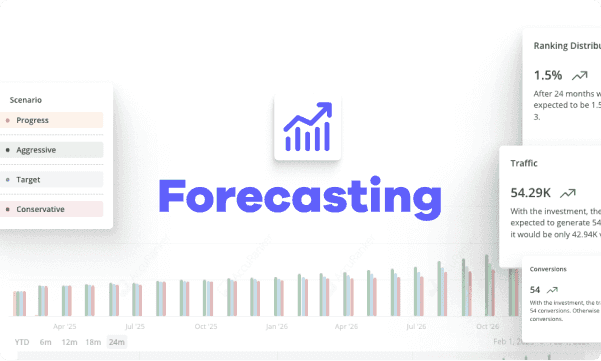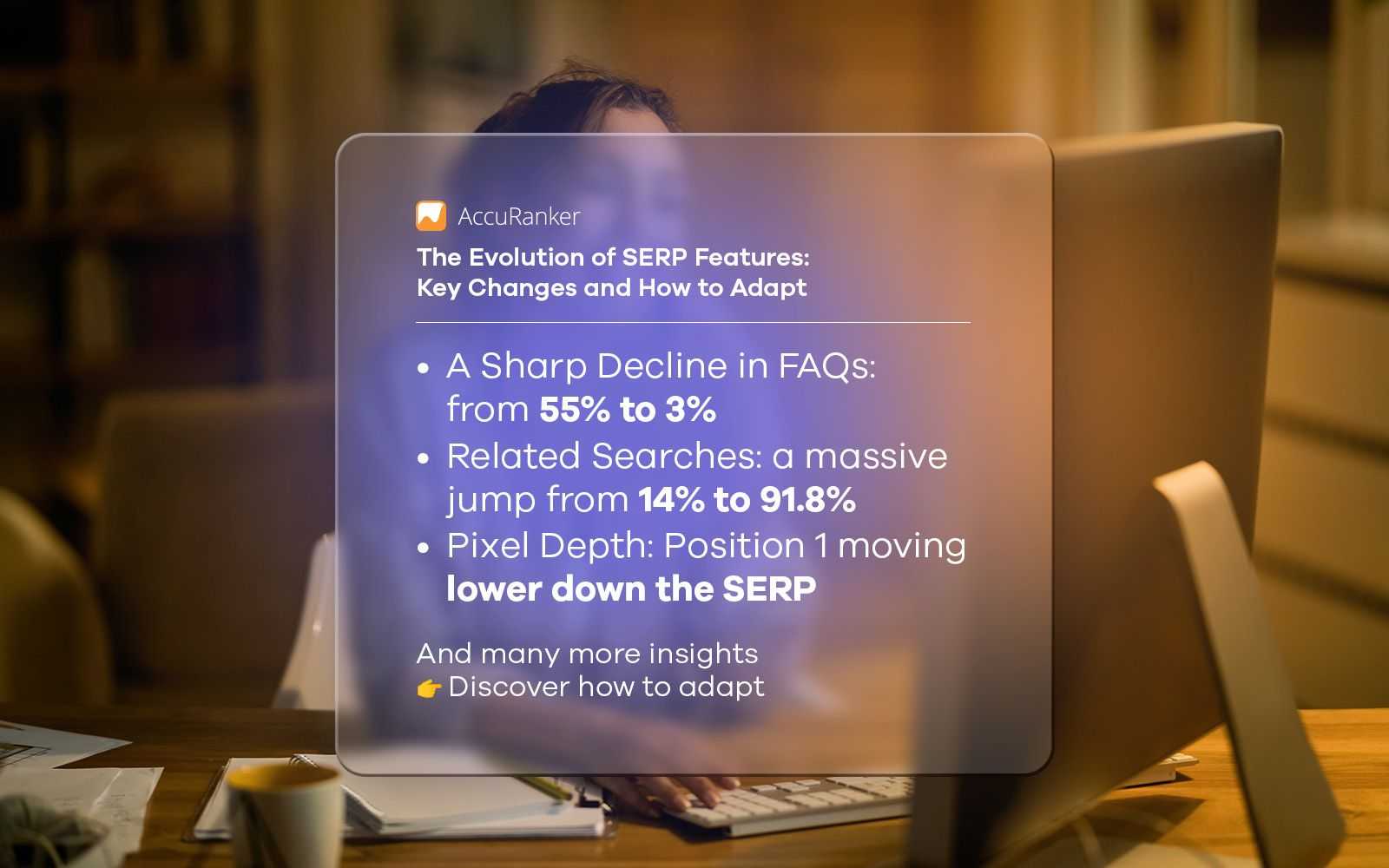Mastering Your Digital Content Strategy in 10 Steps
Last updated on Thursday, October 19, 2023

To engage and convert your audience market today, you need to master your digital landscape effectively. And the secret to that is to have a well-defined content strategy.
A well-crafted content strategy boosts your online presence and solidifies your brand's position as a trusted authority within your industry. To help you achieve this, we've outlined a 10-step guide to mastering your digital content strategy.

Step 1: Defining Your Goals and Audience
In a Hubspot survey featuring 1,200 marketers, it was found that only 42% know the basic demographic details of their target audience.
This goes to show that a lot of people are still not getting this simple, but vital point, right.
A profound comprehension of your audience enables you to craft content that deeply resonates and effectively engages them.
Understanding your target audience involves creating detailed buyer personas considering factors like pain points, motivations, content preferences, and their buying journey. The greater your understanding of your audience, the more effectively you can customize your content to align with their requirements and preferences.
A pragmatic approach to this would involve the adoption of ideation/brainstorming tools like a flowchart maker, mind map, or whiteboard. With these kinds of tools, you can easily see the bigger picture of what you’re doing. Thus helping you to see what’s missing, what’s next, what to expect, and so on.
For instance, if you are a fitness equipment company, your goal might be to increase online sales by 30% next year. Your audience could include fitness enthusiasts, beginners looking to get fit, and individuals rehabilitating from injuries. With an ideation tool at your disposal, you can easily classify your audience into groups, and then match each group to a content strategy that works for such groups.
Step 2: Content Audit and Inventory
Conducting a content audit is essential for optimizing your strategy. Assess your existing content to determine what's working, what's not, and what can be repurposed or updated. Additionally, consider content mapping, SEO performance analysis, competitor analysis, and identify gaps in your content.
Begin your audit by creating a detailed inventory of your content. List all the blog posts, articles, videos, infographics, and other assets you currently have. This step helps you visualize your content assets and identify areas that require attention.
Step 3: Content Ideation and Planning
When brainstorming content ideas, expand your approach by considering user-generated content (UGC), seasonal and trending topics, and content pillars. Creating a content calendar ensures your audience a consistent flow of valuable information.
Content ideation is where creativity and strategy meet. It involves generating various content ideas that align with your business goals and audience needs. Use keyword research, social listening, and competitor analysis to discover relevant topics.
Once you have a list of topic ideas, prioritize them based on relevance, search volume, and competition. We encourage the use of a spreadsheet software for seamless data visualization.
All these enable you to concentrate on producing content with the highest potential for making an impact.
Your content schedule should include publishing dates, content formats (e.g., blog post, video, infographic), responsible team members, and promotion channels. It acts as a roadmap for your content strategy, ensuring you consistently deliver valuable content to your audience.
Step 4: Content Creation and Quality Assurance
To maintain high-quality content, focus on content formatting, incorporating expert input, and exploring content syndication opportunities. High-quality content resonates with your audience and motivates them to take desired actions.
Content creation is where your ideas come to life. This step involves writing, designing, filming, or otherwise producing the actual content pieces you've planned. It's essential to maintain high standards throughout the creation process.
Quality Writing:
If you're creating written content, ensure it's well-researched, informative, and engaging.
Pay attention to grammar, spelling, and readability.
Use a clear and consistent voice that aligns with your brand.

Visual Appeal: Visual content, such as images, infographics, and videos, should be professionally designed. Visual appeal can significantly impact the audience's perception of your content and brand.
Expert Input: Whenever possible, involve subject matter experts in the content creation. Their insights and authority can add credibility to your content.
Content Syndication: Consider syndicating your content on relevant platforms or partnering with other websites to reach a broader audience. However, be mindful of duplicate content issues and ensure that syndication agreements are clear.
Step 5: SEO Optimization for Higher Visibility
Source: Weblizar![Benefits of SEO for Higher Visibility]()
Optimizing your content is crucial to fostering organic traffic growth from search engines. Follow these SEO best practices:
Keyword Optimization: Incorporate your target keywords naturally within your content, including in headings, subheadings, and body text. Avoid keyword stuffing, which can harm your SEO efforts.
Meta Tags: Craft persuasive meta titles and descriptions that entice users to click when they encounter your content displayed on search engine results pages (SERPs).These tags should accurately represent the content on your page and contain relevant keywords.
High-Quality Backlinks: Quality backlinks from reputable websites can significantly boost your content's authority and search engine rankings. Build relationships with industry peers and strive for organic backlinks.
Mobile Optimization: Make sure your website and content are mobile-friendly. Google prioritizes mobile-responsive websites, and mobile optimization impacts your search rankings.
Fast Loading Speed: Page loading speed affects search engine rankings and user experience. Optimize your website's performance by compressing or resizing images, browser caching, and minimizing code.
Keyword Research: Perform keyword research to pinpoint pertinent keywords and phrases linked to your industry, products, or services. Employ renowned tools such as Google Keyword Planner, SEMrush, or Ahrefs to unveil keywords with substantial search volume and reasonable competition.
Competitor Analysis: Examine your competitors' content to pinpoint the keywords they are prioritizing and the content formats that are thriving within your niche. This data can serve as a compass for your content strategy, enabling you to unearth avenues to surpass your rivals.
Long-Tail Keywords: Consider targeting long-tail keywords – longer and more specific keyword phrases. While they may have lower search volumes individually, they often bring in highly targeted traffic and are less competitive.
Keyword Mapping: Map your chosen keywords to specific content pieces. Content should focus on one primary keyword or topic to maintain clarity and relevance.
On-Page SEO: Optimize individual pieces of content for SEO by including the target keyword in strategic locations. This includes the title, meta description, headings, and body text. Use related keywords and synonyms naturally throughout the content.
Quality Content: High-quality content is a crucial element of SEO. Search engines aim to deliver valuable and relevant results to users, so content that provides genuine value is more likely to rank well.
User Intent: Consider the intent behind user queries and create content that matches that intent. User intent can be informational (seeking information), transactional (looking to make a purchase), or navigational (trying to find a specific website).
Mobile Optimization: With the increasing ubiquity of mobile devices for internet browsing, it becomes increasingly imperative to guarantee that your website is optimized for mobile usage. Google employs a mobile-first indexing approach, signifying that it predominantly relies on a website's mobile version when determining its ranking and inclusion in search engine results.
Site Speed: Page loading speed is pivotal in search engine rankings and profoundly influences user experience. When web pages load slowly, it often results in elevated bounce rates, adversely affecting your SEO endeavors. Optimize your website's speed by compressing images, using browser caching, and minimizing unnecessary code.
Technical SEO: Technical SEO concentrates on enhancing the technical components of your website to enhance its performance on search engines. This includes optimizing your website's structure, improving site speed, and ensuring proper content indexing.
Schema Markup: Utilize structured data, also known as schema markup, to furnish search engines with extra context regarding your content. Implementing structured data (schema markup) can improve how your content appears in search results, potentially leading to higher click-through rates.
Local SEO: Invest in local SEO if your company has a physical presence or serves a specific geographic region. Optimize your content for local keywords, create a Google My Business profile, and encourage customer reviews to improve local search rankings.
Backlink Building: Earn high-quality backlinks from reputable websites in your industry. Backlinks are akin to garnering a "vote of confidence" from other online platforms, exerting a substantial influence on your content's authority and search engine rankings.
Internal Linking: Utilize internal linking to establish connections between relevant pieces of content on your website. This helps with SEO and improves the user experience by guiding visitors to relevant information.
User Experience (UX): User experience is a pivotal factor influencing both SEO and audience engagement. It's imperative to guarantee that your website boasts easy navigation mobile responsiveness, and offers valuable content. Search engines readily acknowledge and elevate websites that make user experience a priority.
Content Updates: Regularly update and refresh your content to keep it relevant and accurate. Outdated content can harm your SEO efforts, so make it a practice to review and update older articles and pages.
Secure Website (HTTPS): Google gives preference to secure websites with HTTPS encryption. Ensure that your website is secure to maintain or improve your search rankings.
User Engagement: Monitor user engagement metrics, including bounce rate, duration of site visits, and click-through rate (CTR). These metrics offer valuable insights into the extent to which your content aligns with and fulfills user expectations.
Step 6: Monitoring and Analytics
Source: Digitalschoolofmarketing![What you can gain from great web analytics]()
Your content strategy isn't set in stone; it needs constant evaluation and refinement. Here's how to effectively monitor and analyze your content's performance:
Analytics Tools: According to reports, approximately 55.49% of all websites today use Google Analytics. Clearly, there must be something impressive about it.
Utilize web analytics tools like Google Analytics to track key metrics. Monitor data related to website traffic, user behavior, conversion rates, and more. These insights guide your content strategy adjustments.
Conversion Tracking: Establish conversion tracking to assess the effectiveness of your content in achieving its intended objectives. Knowing what converts is crucial, whether in sales, lead generation, or email sign-ups.
A/B Testing:
Try out various content formats, headlines, visuals, and calls to action (CTAs) through experimentation. A/B testing empowers you to assess the performance of these different variations and base your decisions on data-driven insights.
Audience Feedback: Pay attention to your audience's comments, reviews, and feedback. This valuable input can reveal opportunities for improvement and inform your future content.
Competitor Analysis: Regularly analyze your competitors' content strategies and performance. Identify gaps or areas where you can outperform them.
Content Calendar Adjustments: Review your content calendar periodically and adjust it based on your findings. If certain topics or formats perform exceptionally well, consider creating more of that content.
Step 7: Scaling Your Strategy
As your content strategy matures, you can scale your efforts for even greater impact:
Content Team Expansion: Consider expanding your content team or outsourcing content creation to meet increasing demand. More hands can lead to more content output.
Multi-Channel Presence: Explore new content distribution channels, such as guest posting on industry websites, growing social media followers, creating a YouTube channel, or launching a podcast. Expanding your presence increases your reach.
Global Expansion: Consider translating and localizing your content for international audiences if applicable. Expanding globally can open up new markets and opportunities.
Step 8: Crisis Management
In the digital world, crises can arise. Be prepared to handle them:
Response Plan: Create a crisis response plan that outlines how to address negative publicity or content-related crises. Having a plan minimizes damage and helps maintain your brand's reputation.

Step 9: Staying Current with Trends
Digital trends evolve rapidly. Stay up-to-date by:
Continuous Learning: Invest in ongoing learning and skill development for yourself and your team. Attend webinars, workshops, and courses to stay current.
Industry News: Regularly follow industry news, blogs, and podcasts to stay informed about the latest trends, technologies, and best practices.
Step 10: User-Generated Content (UGC)
Encourage user-generated content:
Engage with Users:
Interact with your audience on social media.
Respond to comments.
Encourage user-generated content like reviews and testimonials.
UGC Campaigns: Launch UGC campaigns or contests to incentivize your audience to create content related to your brand. User-generated content can be highly authentic and engaging.
For instance, say you’re a clothing brand looking to gain popularity, you can encourage the public to repost your product on their timelines and then get a free promo code to any of their favorite fashion stores. Your audience gets a freebie to eBay, BestBuy, and co. You get a huge PR that catapults you into the digital space. It’s a wise way to take benefit of such fashion hack to save tons of money. A win-win for all.
Conclusion
To become a master of your digital content strategy, it's vital to emphasize continuous learning, adaptability, and an unwavering commitment to delivering value to your audience.
By diligently following these ten steps, you'll find yourself well-prepared to conceptualize, implement, and refine a content strategy that accomplishes your business goals and solidifies your brand's position as a trusted authority within your niche.
Remember that the digital landscape is in a perpetual flux, so maintaining agility, embracing novel opportunities, and consistently putting your audience's needs and interests at the forefront are essential.
Your content strategy is your guiding path to digital triumph, and with unwavering dedication and strategic understanding, you can confidently navigate the ever-evolving digital realm.

Article by:
Uday Tank
Business Enthusiast
Uday Tank is an astute business enthusiast with more than eight years of experience helping businesses reach their full potential. He is the owner of Rankwisely, providing invaluable support & services for businesses to leverage SEO, content marketing, keyword research, and Link Building to 25x their marketing ROI.




